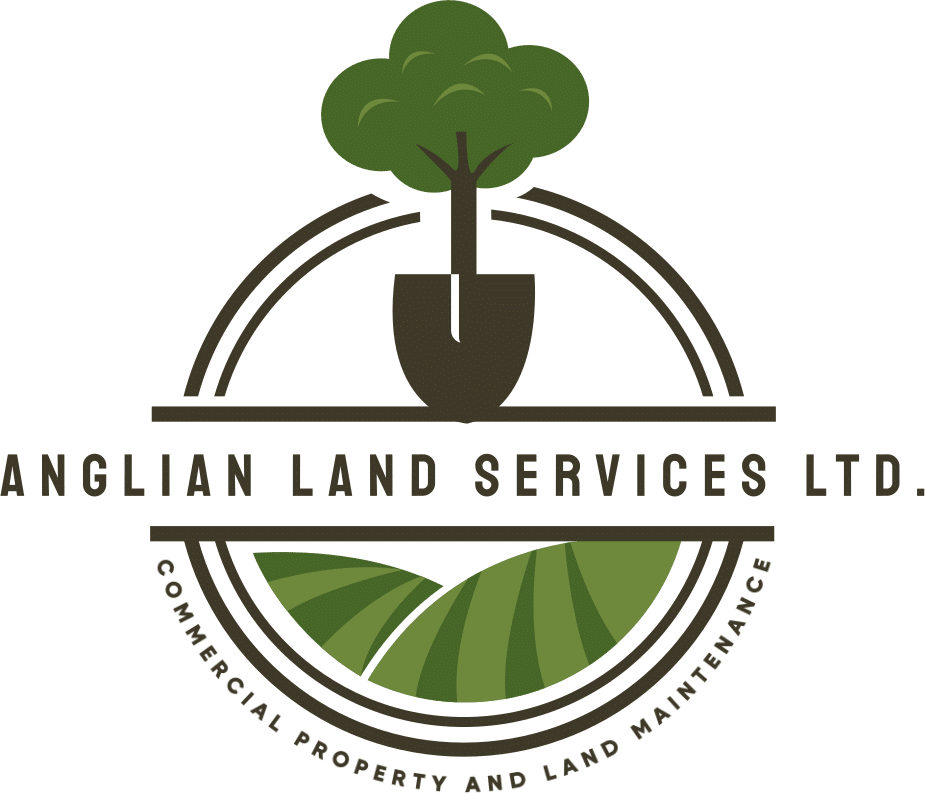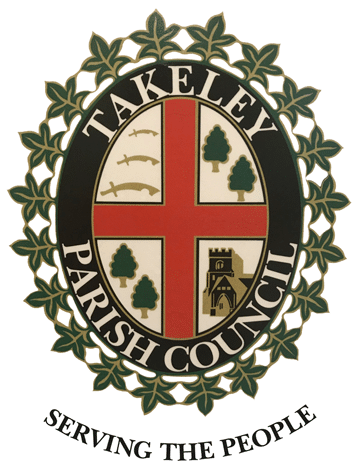Your business premises tell a story before customers even walk through the door. Neat, well-maintained grounds say you care about details and take pride in your work. Messy, overgrown areas send the opposite message.
At Anglian Land Services, we help businesses keep their outdoor spaces looking professional all year round. Good ground maintenance isn’t just about appearances – it’s about protecting your investment and creating the right impression.
What Commercial Ground Maintenance Covers
Commercial ground maintenance includes all the work needed to keep business premises looking tidy and professional.
This covers:
- Regular grass cutting and edge trimming
- Keeping car parks and pathways clear
- Maintaining planted areas and flower beds
- Clearing weeds from paved areas
- Winter gritting and snow clearance
- Litter picking and general tidying
- Tree and hedge maintenance
- Drainage maintenance
The exact work depends on your site, but the goal is always the same – keeping everything looking neat and working properly.
Why It Matters for Business
First impressions count in business. Your grounds are often the first thing people see when they visit.
Customer Perception Well-maintained grounds suggest a well-run business. Customers feel more confident dealing with companies that clearly care about their premises. Messy grounds raise questions about attention to detail in other areas.
Staff Morale Employees feel better about coming to work when the environment looks professional. It shows the company values the workplace and, by extension, the people who work there.
Property Value Good maintenance protects and improves property values. Neglected grounds can significantly reduce what your premises are worth.
Safety and Liability Overgrown areas hide hazards. Slippery paths and unclear sight lines create accident risks. Poor drainage causes flooding. Regular maintenance prevents these problems.
Professional Image Your premises are part of your brand. They should reflect your company’s values and standards just like your marketing materials do.
Different Types of Commercial Sites
Each type of business has different maintenance needs and priorities.
Office Buildings Professional appearance is crucial. Regular grass cutting, neat edges, and tidy planted areas create the right impression. Car parks need to be clean and well-marked.
Retail Parks High customer footfall means grounds need frequent attention. Clear signage, clean pathways, and attractive planted areas help create a pleasant shopping environment.
Industrial Sites Safety often takes priority over appearance. Clear access routes, good drainage, and vegetation control around equipment are essential. Many industrial sites still need to look professional for customer visits.
Healthcare Facilities Peaceful, well-maintained grounds help create a calming environment. Easy access and clear pathways are important for patients with mobility issues.
Educational Buildings Schools and colleges need safe, attractive outdoor spaces. Sports areas, playgrounds, and general grounds all need regular maintenance.
Hotels and Restaurants Attractive grounds are part of the customer experience. They need to look good all year round to maintain the business’s reputation.
Seasonal Maintenance Requirements
Commercial grounds need attention throughout the year, but the work changes with the seasons.
Spring Tasks Spring is when everything starts growing again. This means more frequent grass cutting and general tidying after winter weather.
- Restart regular cutting schedules
- Clear winter debris and litter
- Check for winter damage to plants and structures
- Start weed control programmes
- Prepare planted areas for summer
Summer Maintenance Summer is the busiest time for grounds maintenance. Everything grows quickly and needs regular attention.
- Weekly grass cutting in most areas
- Regular weeding and plant care
- Watering during dry spells
- Maintaining clean, attractive planted areas
- Keeping car parks and pathways tidy
Autumn Preparation Autumn is about preparing for winter while dealing with falling leaves and changing conditions.
- Reduce grass cutting frequency
- Clear fallen leaves from paths and drains
- Final weeding before winter
- Plant care and preparation for dormancy
- Check drainage systems work properly
Winter Care Winter maintenance focuses on safety and access rather than appearance.
- Snow and ice clearance
- Gritting pathways and car parks
- Keeping drains clear
- Emergency tree work after storms
- Planning next year’s improvements
Key Maintenance Activities
Regular maintenance involves several different activities that work together to keep sites looking good.
Grass Care Regular cutting keeps grass neat and professional-looking. The frequency depends on the season and how fast grass grows. Most commercial sites need cutting weekly in summer, less often in winter.
Edge trimming along paths and planted areas makes a huge difference to the overall appearance. Neat edges make everything look more professional.
Weed Control Weeds in paved areas look messy and can damage surfaces. Regular treatment keeps them under control. This might involve hand weeding, mechanical removal, or carefully applied herbicides.
Planted Area Care Flower beds and planted areas need regular attention to look their best. This includes weeding, watering, pruning, and replacing plants that aren’t thriving.
Pathway Maintenance Clean, safe pathways are essential for any business. This means removing weeds, cleaning surfaces, and keeping them free from obstacles.
Car Park Care Car parks often take up large areas and need regular attention. Keeping them clean, well-marked, and free from weeds maintains a professional appearance.
Drainage Care Blocked drains cause flooding and damage. Regular clearing keeps water flowing properly and prevents expensive problems.
Creating Maintenance Schedules
Good commercial maintenance follows a planned schedule rather than being done when someone notices a problem.
Weekly Tasks
- Grass cutting during growing season
- Litter picking and general tidying
- Basic pathway cleaning
- Quick checks for obvious problems
Monthly Tasks
- Detailed weed control
- Plant care and watering
- Edge trimming and detailed grass care
- Drain checking and clearing
Seasonal Tasks
- Major planted area overhauls
- Tree and hedge maintenance
- Deep cleaning of paved areas
- Equipment servicing and replacement
Annual Planning
- Budget planning for next year
- Major improvement projects
- Long-term plant replacement
- Infrastructure upgrades
Working with Professional Contractors
Most businesses find that using professional maintenance contractors gives better results than trying to do everything in-house.
Why Use Professionals Professional contractors have the right equipment, knowledge, and experience to work efficiently. They understand different plant needs, know when to do specific tasks, and can spot problems early.
They also have proper insurance and training for safety-critical work like tree maintenance and chemical applications.
What to Look For Choose contractors who understand commercial requirements. They should be reliable, professional, and able to work around your business operations without causing disruption.
Check they have proper insurance, good references, and experience with similar businesses.
Service Levels Different businesses need different service levels. A high-end hotel needs more frequent, detailed maintenance than an industrial warehouse. Make sure your contractor understands your specific needs.
Communication Good contractors keep you informed about what they’re doing and any problems they spot. They should be easy to contact and responsive to urgent issues.
Budgeting for Ground Maintenance
Ground maintenance is an ongoing cost that needs proper budgeting to be effective.
Regular Costs Basic maintenance happens throughout the year and costs can be predicted fairly accurately. This includes grass cutting, basic weeding, and routine tidying.
Seasonal Variations Some costs vary with the seasons. Winter gritting and snow clearance can’t be predicted exactly. Summer watering depends on the weather.
Planned Improvements Budget for planned improvements like new planting, pathway repairs, or drainage upgrades. These improve the site and prevent bigger problems later.
Emergency Fund Keep some budget for unexpected problems like storm damage, drainage failures, or equipment breakdowns.
Cost Control Strategies
Several strategies can help control maintenance costs without compromising quality.
Preventive Maintenance Regular maintenance prevents small problems becoming expensive repairs. This includes keeping drains clear, dealing with weeds early, and maintaining equipment properly.
Right Plant, Right Place Choose plants that suit your site conditions and maintenance budget. Native plants often need less care than exotic ones. Evergreen plants look good all year with minimal maintenance.
Efficient Scheduling Group similar tasks together and plan routes efficiently. This reduces travel time and gets more work done in each visit.
Appropriate Standards Set maintenance standards that match your business needs. A corporate headquarters needs higher standards than a warehouse, and budgets should reflect this.
Dealing with Challenges
Commercial sites face specific maintenance challenges that need understanding and planning.
High Traffic Areas Areas with lots of foot traffic get worn down quickly. They need more frequent attention and tougher plants that can cope with disturbance.
Limited Access Some areas are hard to reach with equipment or can only be worked on at certain times. This affects what maintenance is possible and when it can be done.
Security Concerns Some sites have security restrictions that affect maintenance scheduling. Contractors need proper clearance and understanding of site rules.
Weather Dependence Outdoor maintenance depends on weather conditions. Have backup plans for when conditions prevent normal work.
Quality Standards
Clear quality standards help ensure maintenance meets your business needs.
Appearance Standards Define what “neat and tidy” means for your site. This might include grass height, acceptable weed levels, and cleanliness standards for paved areas.
Safety Requirements Set clear safety standards for pathways, car parks, and other areas where people walk. This includes slip resistance, clear sight lines, and obstacle-free routes.
Response Times Agree response times for different types of problems. Emergency issues like blocked drains need immediate attention. Routine problems can wait for the next scheduled visit.
Reporting Systems Good contractors provide regular reports on work done and problems identified. This helps you track value for money and plan future work.
Getting Started
Starting a commercial maintenance programme begins with understanding what you have and what you need.
Walk your site and list all the areas that need maintenance. Think about how each area affects your business and what standards are needed.
Consider seasonal requirements and plan accordingly. What looks fine in winter might be unacceptable in summer when customers spend more time outdoors.
At Anglian Land Services, we work with businesses across all sectors to develop maintenance programmes that meet their specific needs and budgets. Whether you need basic grass cutting or comprehensive grounds management, we can help create solutions that keep your site looking professional year-round.
Good commercial ground maintenance is an investment in your business image and property value. It’s also much more cost-effective than letting problems develop and then trying to fix them. The key is finding the right balance between quality and cost for your specific business needs.





